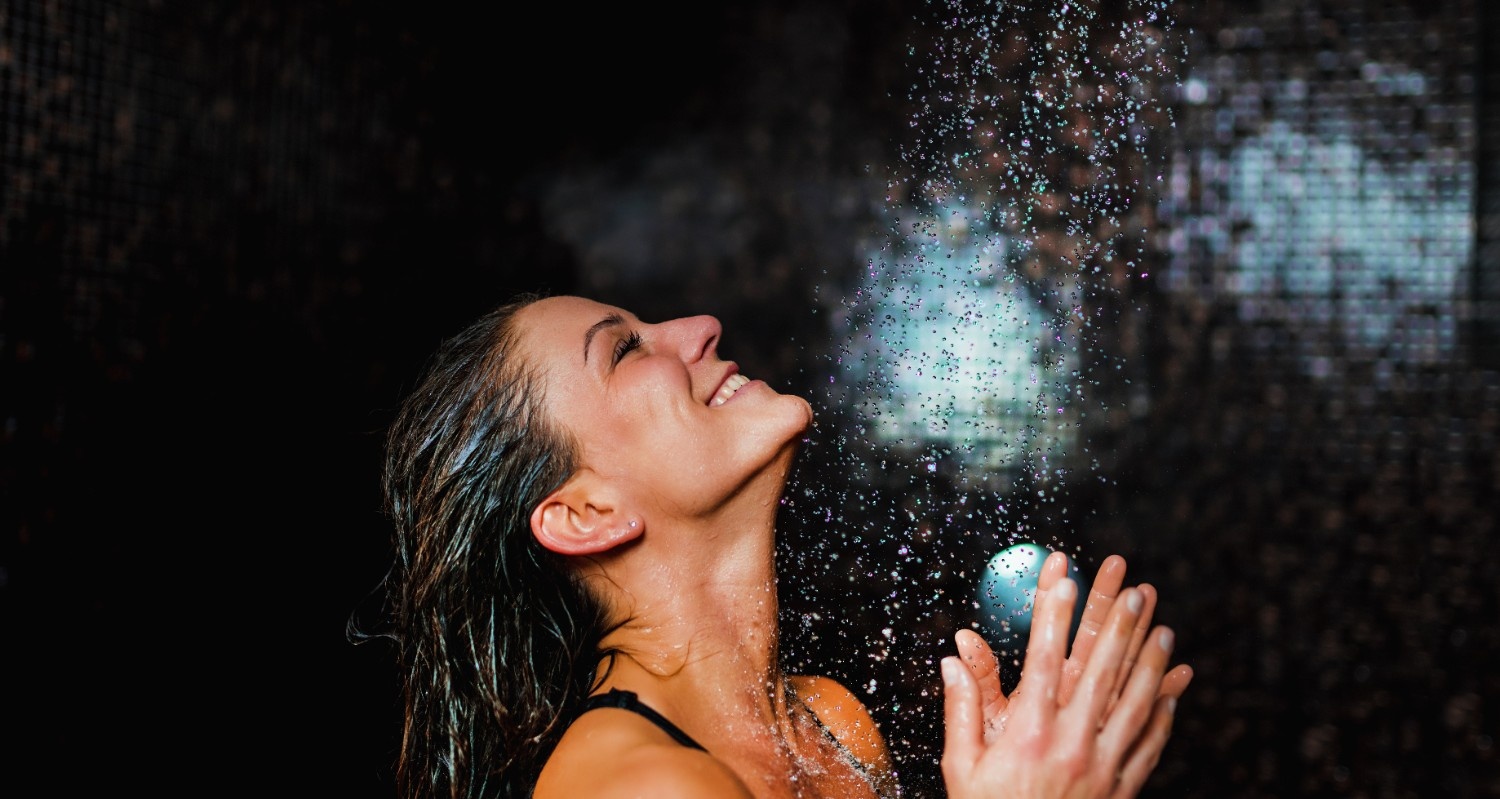The use of water is one of the oldest healing methods. It makes sense—water is familiar and accessible, and its effects are easy to feel, whether in a hot shower or a cold river. Hydrotherapy is a safe and effective method that empowers clients to care for themselves. It is gentle, mood-altering, immune-enhancing, easy to teach, and has few contraindications. It can be used for both prevention and treatment and applied daily or intensively when someone is ill.
What Is Hydrotherapy and What Is It Used For?
Hydrotherapy, simply stated, is the use of water in its different forms (liquid, steam, or ice) and temperatures to obtain health benefits. Water is an ideal medium for transferring heat or cold to the body, releasing toxins through the skin, and treating low mood, pain, and inflammation.
Water is a highly versatile therapy, and due to its wide range of applications, it offers benefits such as muscle relaxation, pain relief, improved circulation, and detoxification, among others. It can be used to relieve symptoms of physical conditions such as osteoarthritis (Dias et al., 2017), fibromyalgia (Silva et al., 2012), and neurological disorders, as well as to reduce stress, depression, anxiety, and insomnia. In this way, it supports overall mental well-being.
Cold, Hot, or Alternating Water Therapy: How and When to Use Each
Hot Water
Hot water is primarily relaxing, helping to draw blood to the surface and contributing to the reduction of chronic pain. Additionally, raising the body’s temperature can help mitigate viral infections, much like a fever. This allows the immune system to function more efficiently and prevents the virus from replicating. It can also be useful for relieving symptoms of anxiety, panic, and insomnia.
Furthermore, hot water increases circulation by dilating blood vessels, alleviates respiratory symptoms, opens airways, clears nasal passages, and inhibits pathogens.
Cold Water
Cold water is stimulating; it causes muscle contraction and drives blood deeper into the body, which helps reduce pain. It also boosts mood, increases oxygen intake, reduces inflammation, and enhances alertness. Additionally, it stimulates immune cell function and improves digestion by drawing blood toward the viscera.
Alternating Hot and Cold Water
One of the most powerful ways to enhance circulation and balance mood is through alternating cold and hot water therapy. Combining heat with cold may be beneficial for immune support as it stimulates blood flow and oxygenates tissues. Research suggests that those who undertook daily hot baths followed by a brief cold bath had lower viral infection and mortality rates during the 1918 influenza pandemic (Ramirez, 2021).
Three Hydrotherapy Methods You Can Try
1. Epsom Salt Bath
This bath is relaxing and detoxifying. Add 2 cups of Epsom salts (magnesium sulfate) and ½ cup of baking soda to a warm (not hot) bath. You may also add some essential oils, such as lavender. Soak for 20 minutes. The magnesium and sulfate will be absorbed, relaxing your muscles and helping you sleep.
2. Cold Shower Therapy
When you feel fatigued, run a shower that is lukewarm. Slowly turn up the cold as much as you can tolerate, then let the water flow directly on your spine for 5 minutes. (Note that you may want to gradually build up to this length of time if you have been acutely ill recently.)
3. Hot and Cold Contrast Shower
I like to combine a hot-and-cold shower with a homemade body scrub:
- Mix together equal parts coarse sea salt and baking soda.
- Add enough water so it becomes a thick paste, and then add in a few drops of your favorite essential oil.
- Get in the shower with a skin brush and get wet.
- Turn the water off, and begin scrubbing with the paste, starting at your toes. Work up your whole body, first the front and then the back, taking your time.
- When you’re done, turn the water back on, rinsing with water that is as hot as is comfortable for you.
- Finish by rinsing for a minute with ice-cold water.
- Towel dry and drink 6 ounces of water.
If you want to learn more, I cover Hydrotherapy and Detoxification in detail in my book The Brainbow Blueprint. You’ll also find in-depth modules on this topic in my certification program Integrative Medicine for Mental Health Disorders.
References
Dias, J. M., Cisneros, L., Dias, R., Fritsch, C., Gomes, W., Pereira, L., Santos, M. L., & Ferreira, P. H. (2017). Hydrotherapy improves pain and function in older women with knee osteoarthritis: a randomized controlled trial. Brazilian journal of physical therapy, 21(6), 449–456. https://doi.org/10.1016/j.bjpt.2017.06.012
Ramirez, F. E., Sanchez, A., & Pirskanen, A. T. (2021). Hydrothermotherapy in prevention and treatment of mild to moderate cases of COVID-19. Medical hypotheses, 146, 110363. https://doi.org/10.1016/j.mehy.2020.110363
Silva, K. M., Tucano, S. J., Kümpel, C., Castro, A. A., & Porto, E. F. (2012). Effect of hydrotherapy on quality of life, functional capacity and sleep quality in patients with fibromyalgia. Revista brasileira de reumatologia, 52(6), 851–857.

Are You Ready to Advance Your Career?
If you want to advance your career in integrative medicine, explore my courses and certifications.














